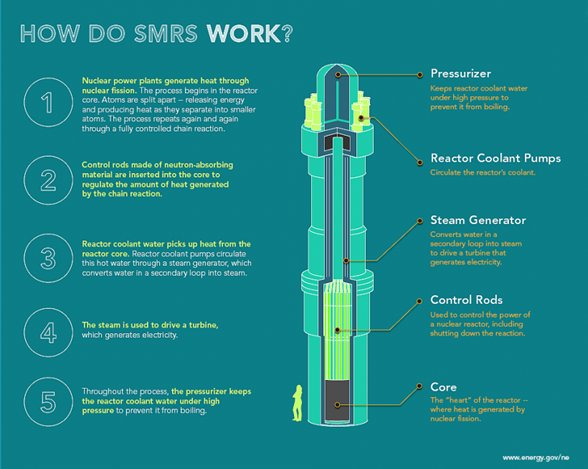Nuclear power was first used to generate electricity in 1951, and since then, the safety and efficiency of this power source has only continued to grow. One of the biggest steps in this innovation comes in the form of small modular nuclear reactors (SMRs).
What are Small Modular Nuclear Reactors?
Small modular nuclear reactors are defined as nuclear reactors that generally produce 300 Mw equivalent or less. For reference, one megawatt of power can power about 750 homes. While no SMRs are currently online in the United States for commercial use, the technology is currently in use in many nuclear submarines, and the first one is expected to come online in Idaho in 2029.
How do they work?
Like conventional nuclear reactors, small modular reactors harness thermal energy to generate electric power. For example, the thermal energy heats water into steam, which then causes a turbine to spin, generating electrical power. While nuclear energy capital intensive, a major advantage of SMR technology come in the form of its smaller footprint and its modular capabilities. Given their smaller footprint, SMRs can be sited on locations not suitable for larger nuclear power plants. Prefabricated units can be built in a factory, and shipped and installed on-site, making them more affordable to build than large power reactors. Larger conventional reactors are generally inflexible in adjusting their generation capabilities, but SMRs have greater control to meet reduced demand.

Figure 1: Department of Energy, 4 Key Benefits of advanced small modular reactors.
Are they safe?
SMRs are considered safer than their conventional counterparts due to their smaller size, as well as their proposed designs. No electrical supplies or pumps are required to cool the reactor following an incident, as this is achieved by natural convection and gravity coolant feed. Additionally, many SMR designs include high-strength physical barriers, and many can be built underground, which can also increase physical security.
